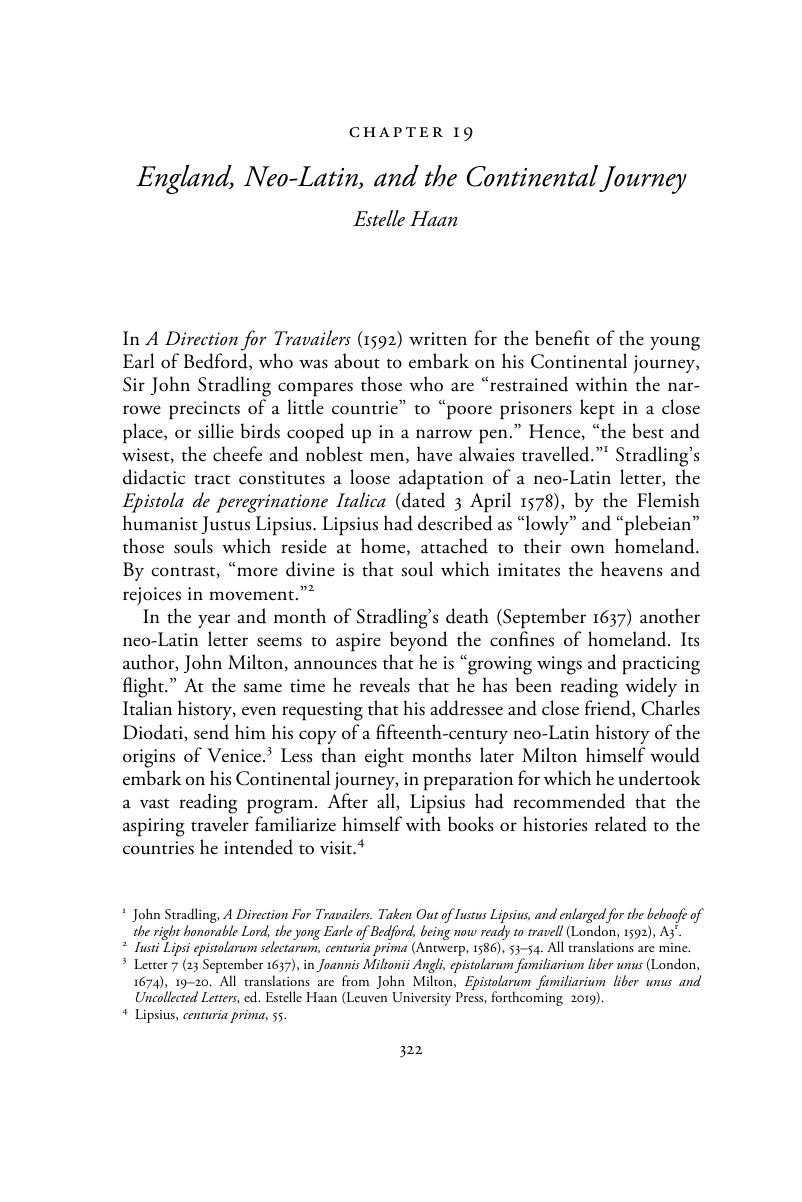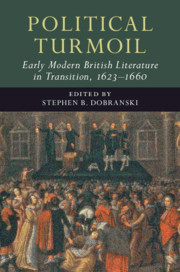Book contents
- Political Turmoil: Early Modern British Literature in Transition, 1623–1660
- Early Modern British Literature in Transition, 1557–1714
- Political Turmoil: Early Modern British Literature in Transition, 1623–1660
- Copyright page
- Dedication
- Contents
- Illustrations
- Contributors
- Abbreviations
- Introduction: Turmoil, Political and Otherwise
- Part I Generic Transitions
- Part II Literature and Ideological Transformation
- Part III Literature and Cultural Transformation
- Part IV Literature and Local Transformation
- Chapter 16 Country Matters
- Chapter 17 Life During Wartime: The Writing of Civil War London
- Chapter 18 Nations in Question: Writing Scotland and Ireland
- Chapter 19 England, Neo-Latin, and the Continental Journey
- Chapter 20 Global Commerce and an Emergent “Empire of Trade”
- Index
- References
Chapter 19 - England, Neo-Latin, and the Continental Journey
from Part IV - Literature and Local Transformation
Published online by Cambridge University Press: 31 January 2019
- Political Turmoil: Early Modern British Literature in Transition, 1623–1660
- Early Modern British Literature in Transition, 1557–1714
- Political Turmoil: Early Modern British Literature in Transition, 1623–1660
- Copyright page
- Dedication
- Contents
- Illustrations
- Contributors
- Abbreviations
- Introduction: Turmoil, Political and Otherwise
- Part I Generic Transitions
- Part II Literature and Ideological Transformation
- Part III Literature and Cultural Transformation
- Part IV Literature and Local Transformation
- Chapter 16 Country Matters
- Chapter 17 Life During Wartime: The Writing of Civil War London
- Chapter 18 Nations in Question: Writing Scotland and Ireland
- Chapter 19 England, Neo-Latin, and the Continental Journey
- Chapter 20 Global Commerce and an Emergent “Empire of Trade”
- Index
- References
Summary

- Type
- Chapter
- Information
- Publisher: Cambridge University PressPrint publication year: 2019



